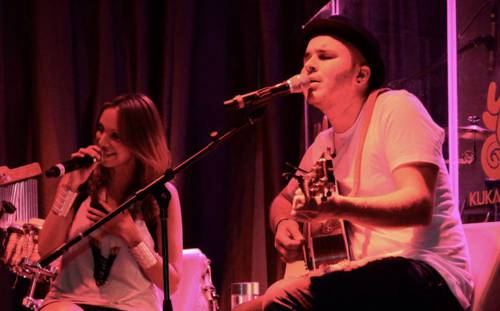
FAQ About The Influence of Latin Pop on Global Music Trends

What is Latin Pop?
Latin Pop is a genre of music that combines Latin music elements with pop music. It originated primarily in Spanish and Portuguese-speaking regions and has gained popularity worldwide, characterized by catchy melodies, rhythmic beats, and influences from various Latin American musical styles.

How did Latin Pop first gain international popularity?
Latin Pop first gained international popularity in the 1980s and 1990s with the success of artists like Gloria Estefan and Ricky Martin. Estefan's "Conga" and Martin's "Livin' la Vida Loca" were cross-over hits, blending Latin rhythms with pop sensibilities, capturing global audiences.

Who are some key artists in the Latin Pop genre?
Key artists in Latin Pop include Shakira, Ricky Martin, Enrique Iglesias, Jennifer Lopez, and newer artists like J Balvin, Bad Bunny, and Rosalía. These artists have played significant roles in bringing Latin Pop to the forefront of global music.

What influences does Latin Pop have on other music genres?
Latin Pop has influenced various music genres by incorporating its energetic rhythms and vibrant beats, contributing to the development of genres such as reggaeton, Latin trap, and Latin-influenced dance music. This cross-genre influence has enriched global music culture.

How does reggaeton relate to Latin Pop?
Reggaeton is a music genre that emerged from Latin Pop, blending Caribbean rhythms, such as reggae and dancehall, with Latin American influences and contemporary pop music. It has become one of the most popular Latin music genres worldwide, significantly shaping global music trends.

Why is Latin Pop's rhythm so appealing to global audiences?
Latin Pop's rhythm is appealing due to its infectious and danceable beats, which often integrate traditional percussive elements from various Latin music styles. These rhythms resonate universally as they invite listeners to dance, feel joy, and connect through music.

What role has social media played in promoting Latin Pop?
Social media platforms like YouTube, TikTok, and Instagram have played a crucial role in promoting Latin Pop by enabling artists to reach a global audience quickly. Viral dance challenges and music videos have helped songs gain popularity beyond their traditional markets.

How has Latin Pop contributed to cultural diversity in music?
Latin Pop has contributed to cultural diversity in music by showcasing Latin American culture and music styles on a global stage. It has encouraged collaboration among artists from different backgrounds, leading to a more inclusive and multicultural music industry.

What are some popular Latin Pop songs that have impacted global music?
Some popular Latin Pop songs that have impacted global music include "Despacito" by Luis Fonsi featuring Daddy Yankee, "Bailando" by Enrique Iglesias, and "Súbeme la Radio" by Enrique Iglesias. These hits have topped international charts and influenced mainstream music worldwide.

Has Latin Pop influenced any specific trends in global music?
Yes, Latin Pop has influenced trends such as the reggaeton beat becoming prominent in pop and urban music. Additionally, the fusion of languages in songs, primarily Spanish and English, has become more common, broadening listenership and cultural exchange in music.

Which countries have been most influential in the rise of Latin Pop?
Countries like Puerto Rico, Colombia, and Mexico have been particularly influential in the rise of Latin Pop. Puerto Rico is known for reggaeton, while Colombia has produced internationally recognized artists like Shakira. Mexico has been a traditional hub for Latin Pop.

How have collaborations with Latin Pop artists impacted global artists?
Collaborations with Latin Pop artists have allowed global artists to explore new sounds and reach diverse audiences. These partnerships often result in chart-topping hits that blend different musical styles and expand the global reach of both Latin and non-Latin artists.

What are the typical instruments used in Latin Pop music?
Typical instruments in Latin Pop music include the guitar, drums, keyboards, and traditional Latin instruments like the congas, bongos, and maracas. These instruments help create the genre's signature sound by blending traditional and contemporary elements.

Is Latin Pop primarily performed in Spanish?
While Latin Pop is predominantly performed in Spanish, many artists incorporate English into their music to reach a wider audience. Bilingual lyrics are common, enhancing cross-cultural appeal and understanding globally.

What impact have streaming platforms had on Latin Pop's global reach?
Streaming platforms such as Spotify and Apple Music have significantly impacted Latin Pop's global reach by making it more accessible to listeners worldwide. These platforms allow for the wide distribution of Latin Pop music, breaking traditional geographic and cultural barriers.

What makes Latin Pop different from traditional pop music?
Latin Pop differs from traditional pop music through its incorporation of Latin rhythms, instruments, and cultural influences that create a unique sound. Its music often features danceable beats and a fusion of various Latin genre elements, setting it apart from mainstream pop.

How does Latin Pop influence dance trends globally?
Latin Pop influences dance trends globally by popularizing Latin dance styles such as salsa, bachata, and reggaeton. These styles have found their way into dance studios and clubs around the world, influencing how people dance to both Latin and non-Latin music.

What challenges do Latin Pop artists face in the global music industry?
Latin Pop artists often face challenges such as breaking language barriers and competing in an industry dominated by English-language music. Despite these obstacles, many artists have successfully reached global audiences by collaborating with international stars and adapting their music styles.

How has Latin Pop evolved over the years?
Latin Pop has evolved by incorporating elements from various musical genres, such as reggaeton, hip-hop, and electronic music, to stay relevant and innovative. Artists continue to explore new sounds and collaborate across genres to captivate a wider audience.

Why is language blending significant in Latin Pop music?
Language blending in Latin Pop music is significant because it broadens the appeal of the music by reaching diverse audiences. It bridges cultural gaps, fosters understanding, and reflects the multilingual, multicultural nature of modern global societies.
